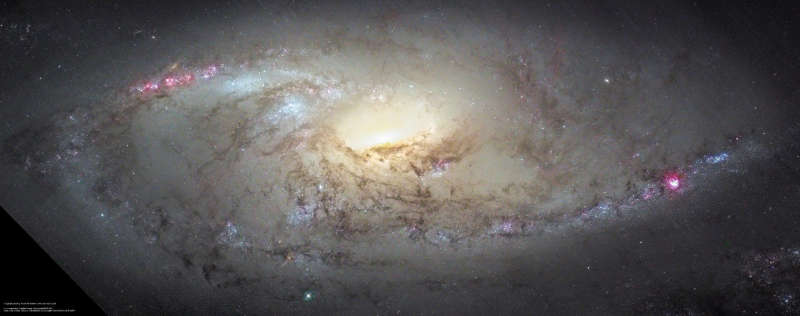
|
Credit & Copyright: Composite Image Data -
Hubble Legacy Archive;
Adrian
Zsilavec, Michelle Qualls, Adam Block / NOAO / AURA / NSF
Processing - André van der Hoeven
Explanation:
Close to the Great Bear
(Ursa Major) and surrounded by the stars
of the
Hunting Dogs
(Canes Venatici), this celestial wonder was
discovered
in 1781 by the
metric French astronomer
Pierre Mechain.
Later, it was added to the catalog of his friend and colleague
Charles Messier as
M106.
Modern deep telescopic views reveal it to be an
island universe:
a spiral galaxy around 30 thousand light-years across located
only about 21 million light-years beyond the stars of the Milky Way.
Along with prominent dust lanes and a bright central core,
this
colorful composite image highlights
youthful blue star clusters and reddish stellar nurseries
that trace the galaxy's spiral arms.
The high resolution galaxy portrait is a mosaic of data from Hubble's
sharp ACS camera combined with groundbased color image data.
M106 (aka NGC 4258) is a nearby example of the
Seyfert class of active galaxies,
seen across
the spectrum from radio to X-rays.
Energetic active galaxies are powered by matter falling into a massive
central black
hole.
Processing - André van der Hoeven
|
January February March April May June July August September October November December |
| ||||||||||||||||||||||||||||||||||||||||||||||||
NASA Web Site Statements, Warnings, and Disclaimers
NASA Official: Jay Norris. Specific rights apply.
A service of: LHEA at NASA / GSFC
& Michigan Tech. U.
Based on Astronomy Picture
Of the Day
Publications with keywords: spiral galaxy - M 106
Publications with words: spiral galaxy - M 106
See also:
